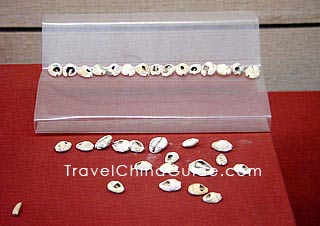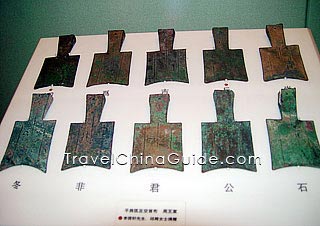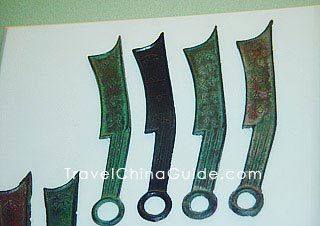China led the ancient world by introducing shells as a medium of exchange and unit of account in commerce. Like many of their counterparts, our forebears at the end of the Neolithic Age used shells as money. They are durable and easy to carry and count so it was used as the universal equivalent. The unit is peng, which has evolved to mean "friend". Friend is our fortune indeed! There is no agreement on how many clustered shells a peng include. A cluster of 10 makes one peng, the commonly held standard unit.
 |
| Ancient Shell Money |
At the end of the Shang Dynasty, northerners in China found it was hard to find enough shells from the south, so they used other materials like pottery, stone, bone, jade, bronze and gold to make shell-shaped money. The bronze shell-shaped coins heralded the mintage of Chinese coin. It was a great leap in the evolution of Chinese currency. Featuring the comparatively unified size, weight and value, the bronze shell-shaped coin entered the circulation smoothly.
After the Spring and Autumn Period, Chu State (present-day Hubei and Hunan) minted coins with Chinese characters. Some of them looked like ants climbing along a nose and some like the face of ghosts. In north China, gold, silver and gold-plating bronze shells appeared.
Spade-shaped and knife-shaped coins were also popular in northern China. The influence of shell did not fade though it staged out as a currency with the social and economic development.
 | | Spade-shaped Money | |  | | Knife-shaped Money | |
Shell (bei) is an important character component in Chinese. Almost all things or acts concerning money have the component of shell, such as fortune, poverty, goods, trade, businessman, tribute, greed, expense, compensation, ransom, expensive (as well as noble), and cheap (as well as humble). People like to call their dear children or pets bao bei, or more sweetly bao bao or bei bei, which literally means treasure, and implies to honey or darling.
- Last updated on Aug. 07, 2025 by Gabby Li -


